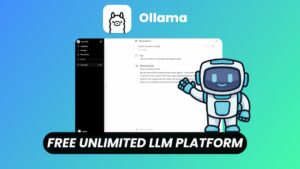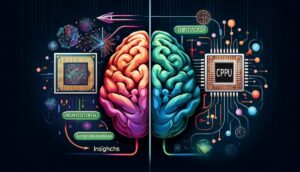The rapid advancement of Large Language Models (LLMs) has ushered in an era of unprecedented capabilities in natural language processing. From generating creative content and summarizing complex texts to answering intricate questions and engaging in sophisticated conversations, LLMs like GPT-3, LaMDA, and PaLM have demonstrated remarkable fluency and understanding. However, despite their impressive feats, these models are not without limitations. One significant challenge lies in their inherent knowledge cut-off and their potential to generate factually incorrect or hallucinated information.
Pre-trained on vast amounts of text data, LLMs encode a broad spectrum of knowledge within their parameters. Yet, this knowledge is static, reflecting the data they were trained on up to a specific point in time. They lack the ability to access and incorporate real-time information or domain-specific knowledge that was not part of their training corpus. This limitation can lead to outdated responses, an inability to answer questions about recent events, or a lack of depth in specialized areas. Furthermore, the generative nature of LLMs, while enabling creativity, also carries the risk of “hallucinations” – generating plausible-sounding but factually inaccurate statements.
Sponsored
To address these critical limitations, a powerful paradigm known as Retrieval-Augmented Generation (RAG) has emerged. RAG represents a significant step forward in enhancing the reliability, accuracy, and knowledge grounding of LLM-generated text. Instead of solely relying on their internal knowledge, RAG models are designed to first retrieve relevant information from an external knowledge source and then generate responses conditioned on both this retrieved information and their pre-existing knowledge. This two-stage process effectively bridges the gap between the vast generative capabilities of LLMs and the need for up-to-date, accurate, and contextually relevant information.
The Two Pillars of RAG: Retrieval and Generation
The core of the RAG framework lies in its seamless integration of two distinct but complementary components:
1. The Retrieval Component:
The first stage involves retrieving pertinent information from an external knowledge base in response to a user query. This knowledge base can take various forms, including:
- Document Databases: Collections of text documents, PDFs, web pages, or research papers.
- Knowledge Graphs: Structured representations of entities and their relationships.
- Vector Databases: Databases optimized for storing and querying dense vector embeddings of text.
The retrieval process typically involves the following steps:
- Query Encoding: The user’s input query is first encoded into a dense vector representation using an encoder model. This encoder is often a pre-trained language model like Sentence-BERT or a task-specific encoder trained for semantic similarity. The goal is to capture the semantic meaning of the query in a numerical vector space.
- Document Encoding (Offline Preprocessing): The documents within the knowledge base are also pre-processed and encoded into dense vector embeddings using the same or a compatible encoder model. This encoding is usually performed offline to create an index of document embeddings.
- Similarity Search: Once the query is encoded, a similarity search is performed within the vector database or the indexed document embeddings to find the documents whose embeddings are most similar to the query embedding. The similarity is typically measured using metrics like cosine similarity.
- Retrieval of Top-K Documents: The top-K most relevant documents based on the similarity scores are retrieved and passed to the generation component. The value of K is a hyperparameter that can be tuned based on the specific application and the characteristics of the knowledge base.
2. The Generation Component:
The second stage involves the LLM taking the original user query and the retrieved context (the top-K documents) as input and generating a response. The retrieved documents act as additional evidence or context that the LLM can leverage to formulate a more informed, accurate, and grounded answer.
The generation process typically involves:
- Contextualization: The LLM processes both the user query and the retrieved documents. It aims to understand the relationship between the query and the provided context.
- Information Fusion: The LLM integrates the information from the retrieved documents with its pre-existing knowledge. It identifies relevant pieces of information within the retrieved context that can help answer the query.
- Response Generation: Based on the combined understanding of the query and the retrieved context, the LLM generates a natural language response. The generation process is guided by the LLM’s pre-trained language generation capabilities, ensuring fluency and coherence.
Advantages of Retrieval-Augmented Generation
The RAG framework offers several significant advantages over purely generative LLMs:
- Enhanced Factual Accuracy: By grounding the generation process in retrieved evidence, RAG significantly reduces the likelihood of factual errors and hallucinations. The model is encouraged to base its responses on the provided context rather than solely relying on its potentially outdated or flawed internal knowledge.
- Access to Up-to-Date Information: RAG enables LLMs to answer questions about recent events or dynamic information by retrieving relevant documents from a constantly updated knowledge base. This overcomes the knowledge cut-off limitation of pre-trained models.
- Improved Knowledge Grounding: Responses generated by RAG models are more likely to be grounded in real-world knowledge and evidence, making them more reliable and trustworthy. Users can often trace the source of the information back to the retrieved documents, increasing transparency.
- Reduced Need for Fine-Tuning: For many knowledge-intensive tasks, RAG can achieve strong performance without requiring extensive fine-tuning of the LLM on task-specific data. The ability to retrieve relevant context at inference time allows the model to adapt to new domains and information without retraining.
- Increased Explainability: By providing the retrieved source documents, RAG offers a degree of explainability to the generated responses. Users can understand why the model provided a particular answer by examining the supporting evidence.
- Handling of Long-Tail Queries: RAG can effectively handle long-tail queries or questions about niche topics by retrieving relevant information from a comprehensive knowledge base, even if the LLM’s internal knowledge about these topics is limited.
Variations and Advanced Techniques in RAG
The basic RAG framework has been extended and enhanced in numerous ways to improve its performance and address specific challenges. Some notable variations and advanced techniques include:
- Different Retrieval Mechanisms: Beyond simple vector similarity search, more sophisticated retrieval methods are being explored, such as graph-based retrieval for navigating knowledge graphs and sparse retrieval techniques like TF-IDF or BM25 for lexical matching.
- Iterative Retrieval: In some approaches, the generation process can iteratively trigger further retrieval steps based on the initial generated content, allowing the model to progressively gather more relevant information.
- Multi-Hop Retrieval: For complex questions that require reasoning over multiple pieces of information, multi-hop retrieval techniques aim to retrieve a sequence of relevant documents or knowledge graph nodes.
- Learning to Retrieve: Instead of using fixed retrieval models, some RAG frameworks incorporate mechanisms to train the retrieval component end-to-end with the generation component, allowing the model to learn which information is most useful for generating accurate responses.
- Contextual Compression: To handle the input length limitations of LLMs, techniques for compressing the retrieved context while preserving the most relevant information are being developed. This can involve selecting key sentences or passages from the retrieved documents.
- Fusion-in-Decoder: This approach involves feeding all the retrieved documents into the decoder of the LLM and allowing the decoder to attend over all of them during the generation process. This can lead to better integration of information from multiple sources.
- Re-ranking: After the initial retrieval step, a separate re-ranking model can be used to further refine the order of the retrieved documents based on their relevance to the query and their potential usefulness for generation.
- Specialized Knowledge Bases: RAG can be tailored to specific domains by using curated and specialized knowledge bases, such as medical literature databases, legal documents, or product catalogs.
Challenges and Future Directions
Despite its significant advancements, RAG still faces several challenges and continues to be an active area of research:
- Retrieval Quality: The performance of RAG heavily relies on the quality of the retrieved documents. Irrelevant or noisy retrieved context can confuse the LLM and lead to poor generation. Improving the accuracy and relevance of the retrieval process is crucial.
- Context Integration: Effectively integrating the retrieved information into the generation process remains a challenge. The LLM needs to discern the most important information from the retrieved context and synthesize it coherently with its own knowledge.
- Handling Long Context: LLMs have limitations on the length of the input context they can process. Efficiently handling and utilizing long retrieved documents or multiple retrieved documents is an ongoing area of research.
- Computational Cost: The two-stage process of retrieval and generation can be computationally more expensive than purely generative models, especially when dealing with large knowledge bases and complex retrieval mechanisms.
- Evaluation Metrics: Developing robust evaluation metrics for RAG systems that go beyond simple accuracy and consider factors like faithfulness to the retrieved context and the quality of the generated response is essential.
The future of RAG is likely to see further advancements in several directions:
- End-to-End Trainable RAG: Moving towards fully end-to-end trainable models that can jointly optimize the retrieval and generation components.
- More Sophisticated Retrieval Strategies: Developing more intelligent and context-aware retrieval mechanisms that can understand the nuances of the query and the structure of the knowledge base.
- Improved Context Integration Techniques: Exploring novel ways for LLMs to effectively fuse information from multiple retrieved documents and their internal knowledge.
- Scalable RAG Architectures: Designing RAG systems that can efficiently handle massive knowledge bases and real-time information streams.
- Integration with Structured Knowledge: Combining RAG with knowledge graphs and other forms of structured knowledge to enable more precise and reasoning-based question answering.
Conclusion: Empowering Language Models with External Knowledge
Retrieval-Augmented Generation represents a paradigm shift in how we build and utilize large language models. By seamlessly integrating the power of information retrieval with the generative capabilities of LLMs, RAG addresses critical limitations related to factual accuracy, knowledge cut-off, and grounding. This framework empowers language models to access and leverage vast amounts of external knowledge, leading to more reliable, informative, and contextually relevant responses. As research continues to advance in both retrieval and generation techniques, RAG is poised to play an increasingly vital role in unlocking the full potential of LLMs across a wide range of applications, from question answering and chatbots to content creation and knowledge-intensive tasks. By bridging the gap between internal knowledge and the ever-evolving world of information, RAG paves the way for language models that are not only fluent but also deeply knowledgeable and trustworthy.



